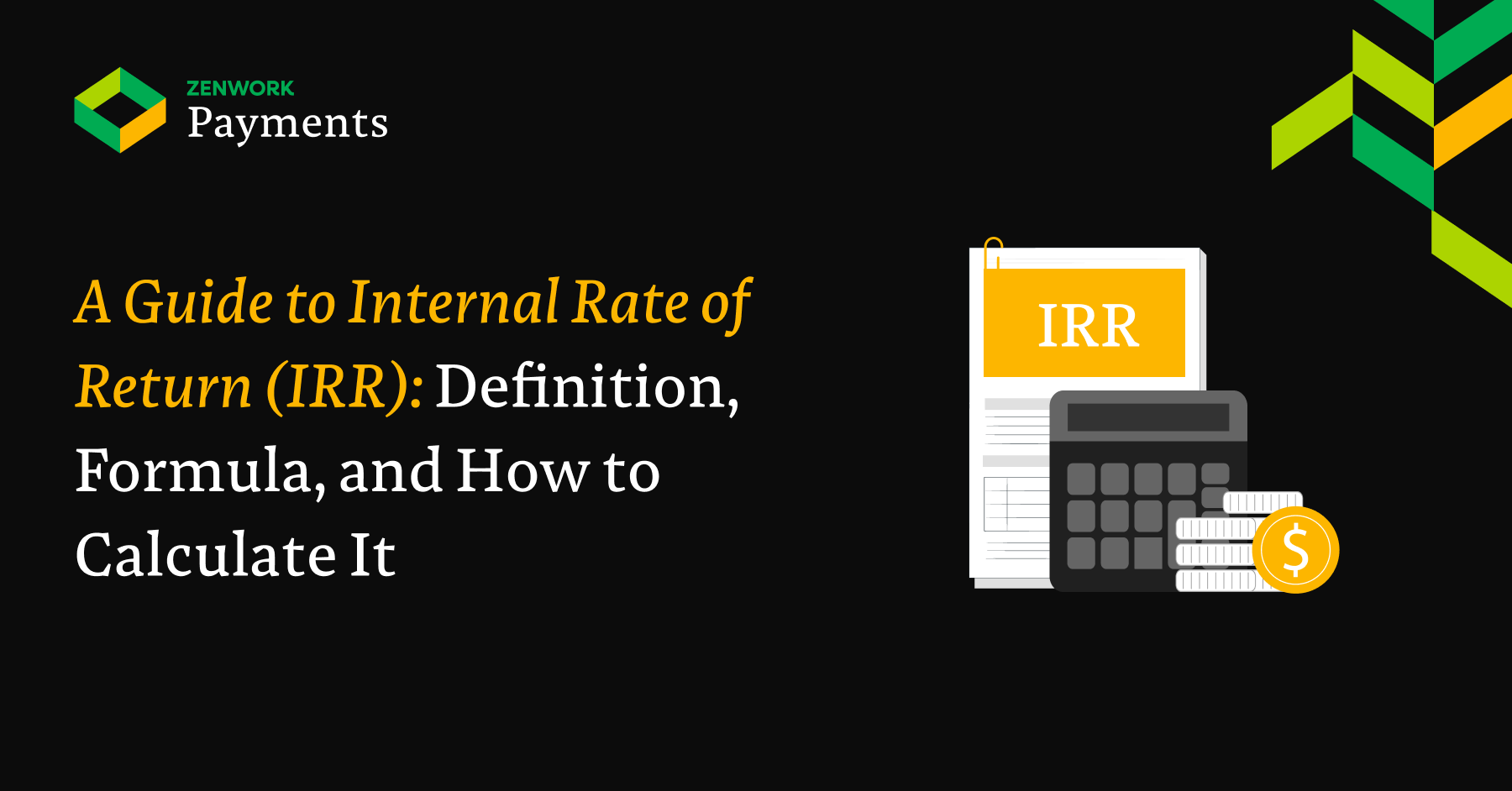Home » A Guide to Internal Rate of Return (IRR): Definition, Formula, and How to Calculate It
A Guide to Internal Rate of Return (IRR): Definition, Formula, and How to Calculate It

Assume having a financial compass that helps you navigate complex investment decisions with precision. That’s exactly what the Internal Rate of Return (IRR) does for businesses and investors. It’s like a financial GPS that tells you whether an investment is worth your time and money.
In this guide, we’ll break down IRR into bite-sized pieces. We’ll explore what it means, how to calculate it, and why smart investors and companies can’t live without it. By the end of this article, you’ll understand IRR like a pro – no accounting degree required.
What Exactly is Internal Rate of Return?
Let’s strip IRR down to its basics. At its core, IRR is a percentage that reveals the potential profitability of an investment. Think of it as a magical number that tells you how much bang you’re getting for your buck.
Technically, IRR represents the discount rate that makes the Net Present Value (NPV) of all cash flows equal to zero. In simpler terms, it’s the rate of return that makes your initial investment break even with future cash inflows.
Key Characteristics:
- Measures investment efficiency
- Considers the time value of money
- Helps compare different investment opportunities
- Works across various financial scenarios
Why Do Investors and Companies Care About IRR?
IRR isn’t just another boring financial metric. It’s a powerful tool that helps decision-makers answer critical questions:
- Will this project generate enough return to justify the investment?
- How do different investment opportunities stack up against each other?
- Are we making smart financial choices?
Real-World Impact
Consider a tech startup deciding between two projects:
- Project A requires $100,000 investment with projected returns
- Project B needs $50,000 with different cash flow patterns
IRR helps them objectively compare these opportunities beyond just looking at total dollars.
Cracking the IRR Formula: A Step-by-Step Breakdown
The Mathematical Magic
The IRR formula looks intimidating: 0 = ∑[Ct / (1+IRR)^t]
But don’t panic! Let’s break it down:
- Ct = Cash flow at specific time periods
- IRR = The rate we’re solving for
- t = Time period of each cash flow
Calculation Methods
Manual Calculation
While possible, manual IRR calculation is like solving a complex puzzle. Most professionals use:
- Financial calculators
- Spreadsheet software
- Specialized financial tools
Excel Makes Life Easier
Excel offers three fantastic functions:
- IRR function: For periodic cash flows
- XIRR function: Handles irregular cash flows
- MIRR function: Accounts for reinvestment rates
IRR vs. Other Financial Metrics: The Showdown
IRR vs. ROI
- ROI: Total return snapshot
- IRR: Detailed return over time
_____________________________________________________________________________________________________________________________________________
Pro Tip: ROI tells you how much you’ve earned. IRR tells you how fast you’re earning it.
______________________________________________________________________________________________________________________________________________
IRR vs. NPV
- NPV: Absolute value of investment
- IRR: Percentage return rate
They’re like teammates – use them together for better insights.
IRR vs. CAGR
- CAGR: Smoothed annual growth rate
- IRR: More nuanced investment performance measure
What Makes a “Good” IRR?
There’s no universal “good” IRR. It depends on:
- Industry standards
- Risk tolerance
- Comparative opportunities
- Weighted Average Cost of Capital (WACC)
Rough Industry Benchmarks
- Venture Capital: 40-60%
- Real Estate: 15-20%
- Established Companies: 10-15%
IRR Limitations: What to Watch Out For
IRR isn’t perfect. Potential pitfalls include:
- Multiple IRR scenarios with changing cash flows
- Ignoring investment scale
- Unrealistic reinvestment assumptions
The MIRR Solution
Modified Internal Rate of Return (MIRR) addresses some traditional IRR weaknesses by using more realistic reinvestment rates.
Practical Examples: IRR in Action
Scenario 1: Startup Investment
A venture capital firm compares two startup investments:
- Startup A: $100,000 investment, projected 35% IRR
- Startup B: $50,000 investment, projected 45% IRR
The higher percentage doesn’t always mean better returns. Context matters!
Scenario 2: Corporate Project Selection
A manufacturing company evaluates expansion projects using IRR to determine the most financially sound option.
Conclusion: Making IRR Work for You
IRR is a powerful tool, but it’s not a crystal ball. Always:
- Compare multiple financial metrics
- Consider risk and context
- Use IRR as part of a comprehensive analysis
Frequently Asked Questions
- Can IRR be negative?
Yes! A negative IRR means the investment loses money.
- How is IRR different from discount rate?
Discount rate is predetermined. IRR is calculated based on actual cash flows.
- What’s a good IRR for real estate?
Typically, 15-20%, but it varies by market and property type.

